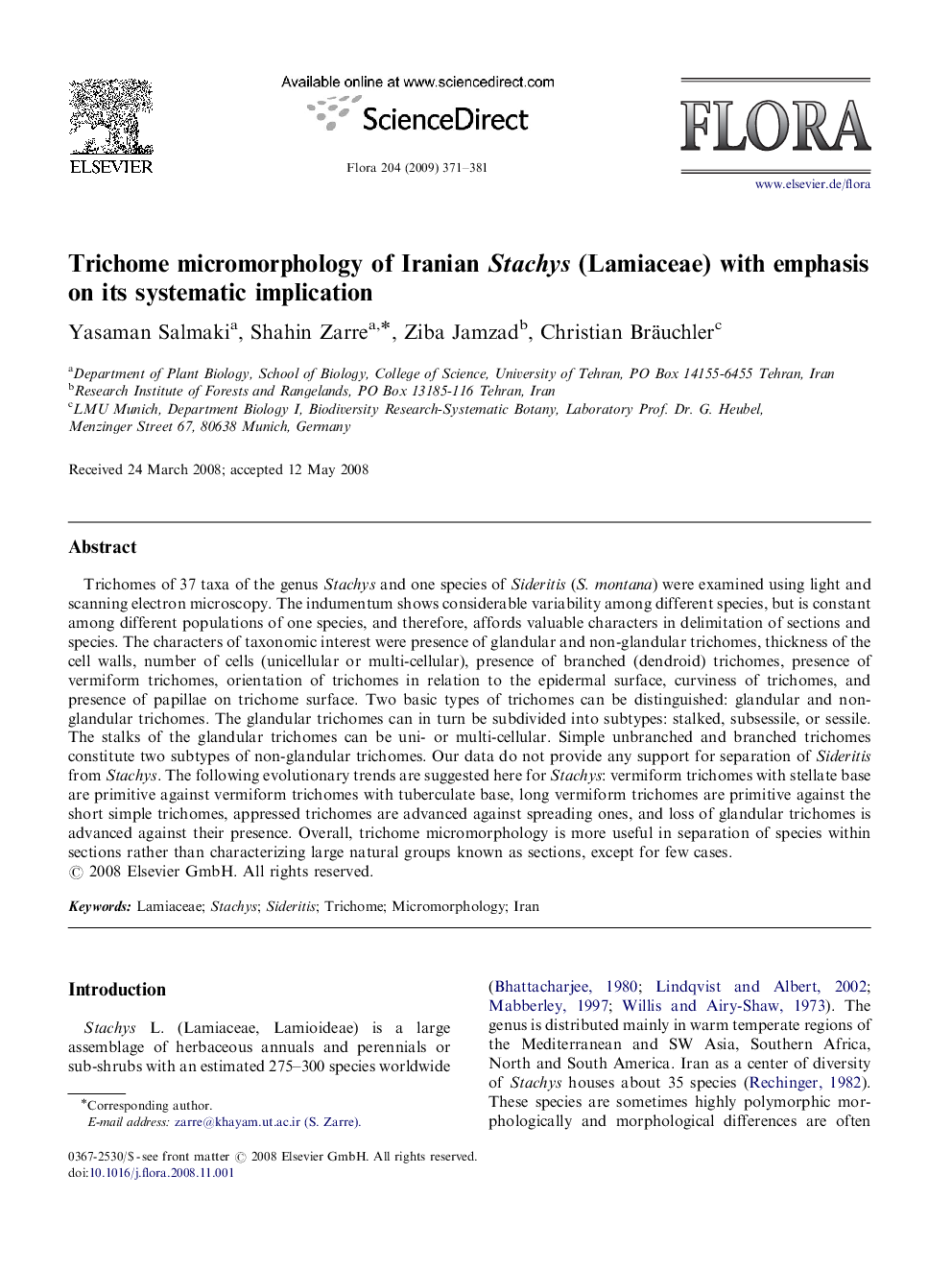| Article ID | Journal | Published Year | Pages | File Type |
|---|---|---|---|---|
| 2180094 | Flora - Morphology, Distribution, Functional Ecology of Plants | 2009 | 11 Pages |
Trichomes of 37 taxa of the genus Stachys and one species of Sideritis (S. montana) were examined using light and scanning electron microscopy. The indumentum shows considerable variability among different species, but is constant among different populations of one species, and therefore, affords valuable characters in delimitation of sections and species. The characters of taxonomic interest were presence of glandular and non-glandular trichomes, thickness of the cell walls, number of cells (unicellular or multi-cellular), presence of branched (dendroid) trichomes, presence of vermiform trichomes, orientation of trichomes in relation to the epidermal surface, curviness of trichomes, and presence of papillae on trichome surface. Two basic types of trichomes can be distinguished: glandular and non-glandular trichomes. The glandular trichomes can in turn be subdivided into subtypes: stalked, subsessile, or sessile. The stalks of the glandular trichomes can be uni- or multi-cellular. Simple unbranched and branched trichomes constitute two subtypes of non-glandular trichomes. Our data do not provide any support for separation of Sideritis from Stachys. The following evolutionary trends are suggested here for Stachys: vermiform trichomes with stellate base are primitive against vermiform trichomes with tuberculate base, long vermiform trichomes are primitive against the short simple trichomes, appressed trichomes are advanced against spreading ones, and loss of glandular trichomes is advanced against their presence. Overall, trichome micromorphology is more useful in separation of species within sections rather than characterizing large natural groups known as sections, except for few cases.
